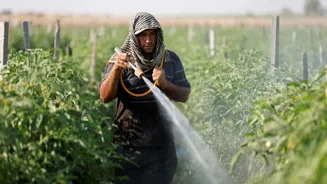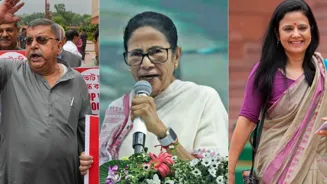What is the story about?
The Indian government has made Farmer ID mandatory in 14 states for new registrations under the PM-KISAN scheme, Minister of State for Agriculture and Farmers Welfare Ramnath Thakur said in a written reply to the Lok Sabha on Monday.
The minister also confirmed that there is currently no proposal under consideration to increase the ₹6,000 annual benefit provided under the scheme.
Launched in February 2019, PM-KISAN is a central sector scheme aimed at supplementing the financial needs of farmers with cultivable landholding. Under the programme, ₹6,000 is transferred annually in three equal instalments directly into Aadhaar-seeded bank accounts of eligible farmers via Direct Benefit Transfer (DBT) mode.
Since inception, the
government has disbursed over ₹3.90 lakh crore through 20 instalments, according to official data.
Also Read:PM-KISAN 20th instalment released: Who will get it and how to check status
To ensure last-mile delivery and transparency, a farmer-centric digital infrastructure has been developed, removing intermediaries from the process. States have also created multiple enrolment modes to build their farmer registries, including self-registration, CSC mode, operator mode (via state agriculture and revenue officials), and Sahayak mode.
These mechanisms, the ministry said, allow local administrations to address grievances or discrepancies during registration through authorised field-level officials.
Eligibility under the scheme is primarily based on cultivable landholding, with exclusions applied to farmers with higher income profiles.
The minister also confirmed that there is currently no proposal under consideration to increase the ₹6,000 annual benefit provided under the scheme.
Launched in February 2019, PM-KISAN is a central sector scheme aimed at supplementing the financial needs of farmers with cultivable landholding. Under the programme, ₹6,000 is transferred annually in three equal instalments directly into Aadhaar-seeded bank accounts of eligible farmers via Direct Benefit Transfer (DBT) mode.
Since inception, the
Also Read:PM-KISAN 20th instalment released: Who will get it and how to check status
To ensure last-mile delivery and transparency, a farmer-centric digital infrastructure has been developed, removing intermediaries from the process. States have also created multiple enrolment modes to build their farmer registries, including self-registration, CSC mode, operator mode (via state agriculture and revenue officials), and Sahayak mode.
These mechanisms, the ministry said, allow local administrations to address grievances or discrepancies during registration through authorised field-level officials.
Eligibility under the scheme is primarily based on cultivable landholding, with exclusions applied to farmers with higher income profiles.
Do you find this article useful?














